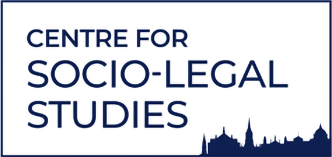
On My Unexpected Foray into Textual Analysis (And the Value of Methodological Flexibility)

An anthropologist working with queer asylum seekers in Switzerland, I am undertaking a project interrogating the nature and forms of violence that Swiss asylum authorities (Secrétariat d’État aux migrations or SEM hereafter) recognise as “persecution”. I aim to show that the “persecution” experienced by queer asylum seekers is underappreciated in a system that relies on the outdated 1951 Refugee Convention to determine the rights of asylum seekers and refugees. To make this argument, I must examine how the SEM interprets the text of the Convention when defining the intensity and modality of violence that can be considered relevant to asylum law. Focusing on my strategy to achieve this task, this blog post argues in favour of methodological flexibility and reflects on how textual analysis can complement ethnographic research.
Having been trained in anthropology, I tend to favour methods like observant participation and in-depth interviews, which arguably maximise interaction with those concerned by the issue I plan to study. When it comes to institutional bureaucracies, however, prying researchers like myself are often faced with a desire for opacity that can be insurmountable, as another blog recently explored. Even if I were to be granted an interview or two with SEM bureaucrats, framing the resulting data as “ethnographic” would be an overreach. Moreover, I know from prior experience that the trust and rapport with interlocutors that lend ethnographic research its intellectual authority cannot be rushed. This predicament found me scrambling for a suitable vantage point from which to understand and analyse the SEM’s interpretation of the Refugee Convention vis-à-vis forms of violence relevant to asylum law. With a submission deadline looming, I knew it was time to rejig my methodological arsenal.
A few months ago, I had come across a professional training manual specific to asylum issues for employees of the SEM. Though originally published in 2004, the document had been updated in March 2019. By its own description, it “contains the most important information on specific themes of the [asylum] procedure” (my translation from French). Exceeding 600 pages, its various sections address an array of complex problems, from defining the characteristics of the violence that can lead to refugeehood (la qualité de réfugié), to setting out the logistics of and strategies for interviewing asylum seekers.
Upon a close reading and some content analysis of relevant sections of the manual, I became convinced that a textual analysis, while not a staple of anthropology, would serve as an effective proxy for interviews with SEM officials. But would I not be privy to a more authentic and candid view if I were to conduct interviews with SEM officials instead of analysing text produced by the SEM? Surely, the content of the SEM manual must have gone through multiple iterations of institutional examination and approval. But the information I would have collected from interviews with officials would be no less mediated as the interviewees would be speaking to me in their official capacity. The manual offers a cross-sectional view of how the SEM interprets the Convention in adjudicating which forms of violence are relevant to asylum law, which is a different, but not a less ‘truthful’, cross section than what I might have accessed through interviews.
Of course, whether such an alternative works depends on the kind of questions at stake. I aim to understand how a state organ (the SEM) interprets an international legal instrument (the Convention), a purpose served by textual analysis. Were I interested in knowing about the views of individual SEM officials on the intensity and forms of violence they consider as persecution, I would have been wiser to look elsewhere. Textual analysis of an official document would not allow me to examine the beliefs of individual officials, or how they impact asylum decisions.
Working with text, I am also able to harness its materiality to enrich my ethnographic practice. I can carry relevant sections of the manual to focus groups and interviews with queer asylum seekers and refugees, and pull out excerpts to prompt my interviewees to (re-)read and respond to them, which is easier than paraphrasing excerpts from interviews with SEM officials. Another important facet of the manual’s materiality is that it is replete with inter-textual references, hyperlinking to other sections of the manual itself, but also relevant case law, judgements, and academic literature, all of which provide a detailed picture of the intellectual culture and orientation of the SEM. It would be surprising if interview participants, even if they are professionals, could cite as extensively off the cuff.
While such alternatives are not always as forthcoming as in my case, I found in this experience a valuable and essential reminder to keep our methodological horizons broad and be attentive to alternative sources of data.

